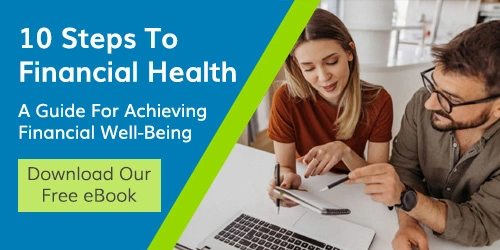7 Steps for Paying Off Your Debt
Paying off debt can feel overwhelming, especially when you’re juggling everyday expenses alongside mounting balances. But with a clear plan and some consistent effort, you can take back control of your finances. Whether you’re dealing with credit card debt, personal loans, or medical bills, these seven steps can help you make meaningful progress toward financial freedom.
1. Reduce Your Current Bills
Before tackling your debt head-on, look for ways to free up cash in your current budget. Review your monthly expenses to see where you can cut back. Cancel unused subscriptions, negotiate lower rates on bills like internet or insurance, and cook at home more often instead of dining out. Even small savings – $25 or $50 here and there – can add up and give you more breathing room to apply toward your debt.
2. Assess Your Debt Load
Next, take a comprehensive look at what you owe. Make a list of all your debts, including balances, interest rates, minimum payments, and due dates. This overview will help you prioritize your debts and better understand your total financial picture. Knowing exactly where you stand is the most important step toward creating an effective plan.
3. Create a Manageable Budget
Now that you know where your money is going, it’s time to give every dollar a job. Build a realistic monthly budget that covers your needs, trims unnecessary wants, and includes room for debt repayment. Be sure to include a small buffer for unexpected expenses so you don’t end up relying on credit again. Tools like budgeting apps or spreadsheets can help you stay organized and motivated.
4. Consider Picking Up Another Job
If cutting expenses isn’t enough, increasing your income can accelerate your debt payoff timeline. Consider picking up a part-time job, freelancing, or monetizing a hobby. Even temporarily boosting your income by a few hundred dollars a month can make a big difference. Just be careful not to let extra income lead to more spending; use it to fuel your debt payoff goals.
5. Implement a Debt Payoff Strategy
With a budget and extra cash in hand, choose a debt payoff method that works for you. Two of the most popular strategies are:
- The Debt Snowball Method: Focus on paying off your smallest debt first while making minimum payments on the others. Once the smallest is paid off, roll that payment into the next smallest debt. This method builds momentum and motivation.
- The Debt Avalanche Method: Focus on paying off debts with the highest interest rates first. This saves more money over time compared to the snowball method, but it may take longer to see initial wins.
To increase your chances of success, pick the approach that keeps you motivated and consistent.
6. Consider a Debt Consolidation Loan
If you’re juggling multiple high-interest debts, a debt consolidation loan may simplify repayment. This type of loan lets you combine your debts into a single monthly payment, ideally with a lower interest rate. Just make sure the new loan terms truly benefit you. Watch for fees and longer repayment periods that could cost more in the long run.
7. Explore Other Debt Relief Options
If your debt feels unmanageable despite your best efforts, it may be time to explore additional relief options. These may include:
- Debt settlement: Negotiate with creditors to pay less than the total owed.
- Credit counseling: Work with a legitimate and trustworthy firm to create a structured debt management plan.
- Bankruptcy: A legal option that can discharge certain debts but has long-term credit consequences.
These choices aren’t for everyone, and they often come with trade-offs. Consulting a certified credit counselor or financial advisor can help you weigh your options and make an informed decision.


